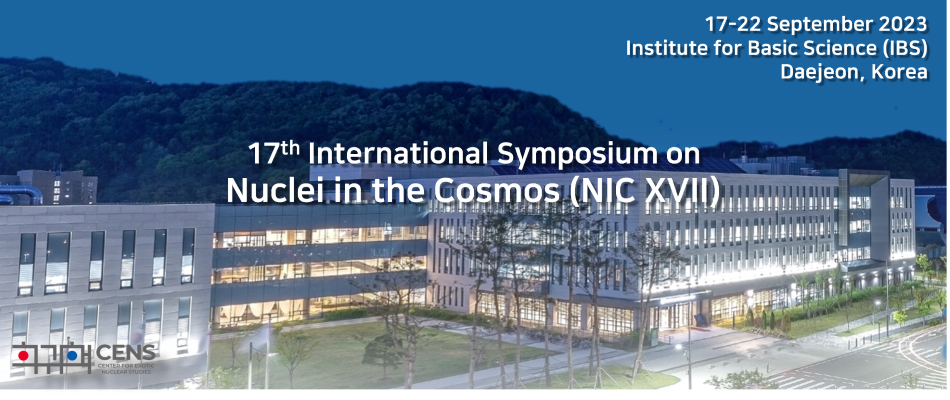Speaker
Description
A group of reactions involving neon isotopes have been studied at the Laboratory for Underground Nuclear Astrophysics (LUNA) using the intense proton beam delivered by the LUNA 400 kV accelerator and a windowless differential-pumping gas target.
For years the $\mathrm{^{22}Ne(p, \gamma)^{23}Na}$ reaction was the most uncertain reaction in the NeNa cycle of hydrogen burning. LUNA was able to discover three new low-energy resonances in this reaction and to measure the nonresonant capture to unprecedently small energy. LUNA has significantly reduced the uncertainty surrounding this reaction and the NeNa cycle, but there is now a need for new, precise data on other reactions in the NeNa cycle.
The $\mathrm{^{20}Ne(p, \gamma)^{21}Na}$ reaction is the slowest in the NeNa cycle and determines the overall rate at which the entire cycle proceeds. Within the temperature range of 0.1 GK to 1 GK, the rate of the reaction is primarily influenced by the 366 keV resonance and the direct capture component. These factors play a crucial role in determining the quantity of $\mathrm{^{22}Na}$ produced, which is a key observable in gamma-ray astronomy. LUNA reduced the uncertainty on the 366 keV resonance strength from 18% to 7% and for the first time measured the direct capture below 370 keV.
New measurements of low energy resonances in the $\mathrm{^{21}Ne(p,g)^{22}Na}$, the second reaction in the NeNa cycle, are ongoing.
Furthermore, new studies are dedicated to $\mathrm{^{22}Ne}$, an important neutron source in the weak s-process via the $\mathrm{^{22}Ne(\alpha,n)^{25}Mg}$ reaction.
The $\mathrm{^{22}Ne(\alpha,\gamma)^{26}Mg}$ reaction, which competes with the $\mathrm{^{22}Ne(\alpha,n)^{25}Mg}$ reaction has been recently studied. At temperatures T < 300 MK the $(\alpha,\gamma)$ channel becomes dominant and the rate of the $\mathrm{^{22}Ne(\alpha,\gamma)^{26}Mg}$ reaction is influenced by multiple resonances that have been solely investigated using indirect techniques thus far. The new upper limits determined by LUNA cause the intershell $\mathrm{^{25}Mg/^{26}Mg}$ ratio to decrease by a factor of 15 in 5 $M_{\odot}$ AGB stars.
Recent results will be presented and discussed, together with future perspectives for the study of the $\mathrm{^{22}Ne(\alpha,n)^{25}Mg}$ reaction.

